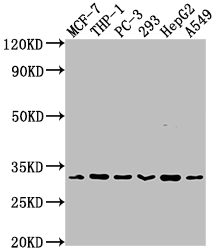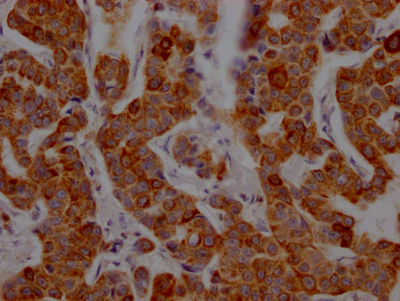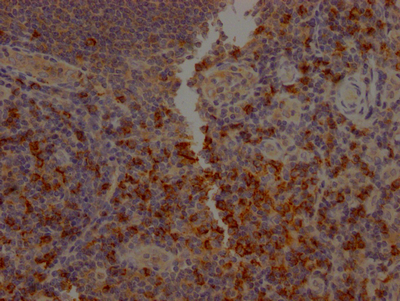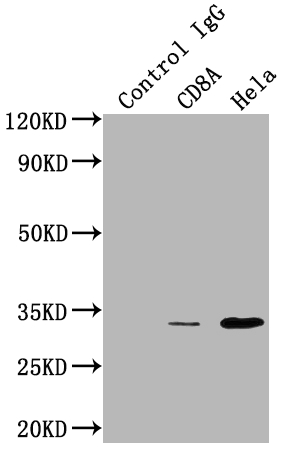Alternative Names
T-cell surface glycoprotein CD8 alpha chain (T-lymphocyte differentiation antigen T8/Leu-2) (CD antigen CD8a), CD8A, MAL
Immunogen
A synthesized peptide derived from human CD8
Immunogen Species
Homo sapiens (Human)
Purification Method
Affinity-chromatography
Concentration
It differs from different batches. Please contact us to confirm it.
Buffer
Rabbit IgG in 10mM phosphate buffered saline , pH 7.4, 150mM sodium chloride, 0.05% BSA, 0.02% sodium azide and 50% glycerol.
Tested Applications
ELISA, WB, IHC, IP
Recommended Dilution
| Application |
Recommended Dilution |
| WB |
1:500-1:5000 |
| IHC |
1:50-1:200 |
| IP |
1:200-1:1000 |
Storage
Upon receipt, store at -20°C or -80°C. Avoid repeated freeze.
Lead Time
Basically, we can dispatch the products out in 1-3 working days after receiving your orders. Delivery time maybe differs from different purchasing way or location, please kindly consult your local distributors for specific delivery time.
Description
CUSABIO immunized an animal with a synthesized peptide derived from human CD8 to stimulate an immune response. B cells were isolated from the immunized animal and fused with myeloma cells to form hybridoma cells. A single hybridoma cell clone that produces CD8A-specific antibodies was screened and selected. RNA was extracted from the chosen hybridoma cells, and the gene sequence encoding the CD8A antibody was amplified using reverse transcription PCR. These CD8A antibody genes were then cloned into an expression vector and transfected into a host system for expression. The CD8A recombinant monoclonal antibodies were purified from the cell culture supernatant using affinity chromatography. The binding specificity and affinity of the recombinant CD8A monoclonal antibody were confirmed using four applications including ELISA, WB, IHC, and IP. This antibody specifically recognizes human CD8A protein.
Usage
For Research Use Only. Not for use in diagnostic or therapeutic procedures.







